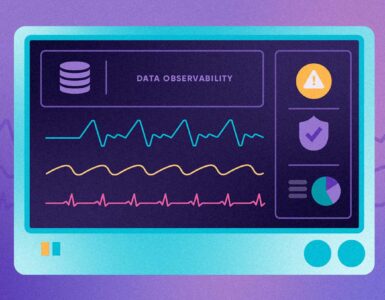Did you know that over 40% of all data breaches are aimed at medium and small size businesses?
This means that no business is safe from the prying eyes of cybercriminals, no matter the size. Over 60% of small businesses have reported a security threat during the last 12 months.
These businesses are anything from small optometrist offices to car dealerships and more.
Keeping your company’s data safe requires the right tools, the right strategy, and the right frame of mind. Keep reading for the ultimate list of tips on improving data security for small businesses. For more additional information on data security, check out this article from networkassured.com.
Making It Impassable: Improving Data Security
The security of your data should undeniably be one of the highest priorities within your business. So many data breaches can happen due to human error, others happen because people weren’t prepared, and some happen because your defenses just weren’t enough.
Attacks that we read about in the news can showcase just how vulnerable any business is to the attacks of cybercriminals. These attacks truly highlight businesses’ lack of security strategy.
Nowadays, businesses are not only responsible for the data of their own organization such as business and financial records, employee records, and even trade secrets but your business is also responsible for all the information that you house on customers, prospects, and even suppliers.
1. Know The System
It may sound really basic but many businesses don’t actually know the inner workings of their own data storage. One way to really improve upon your data security is about knowing everything there is to know about how your business gets its data, the route that data travels, and ultimately, where that data is saved and stored.
This could be stored in-house or with an external supplier, whichever it is, take the time to understand the preventative measures that are in place to protect this data.
2. Check For Vulnerabilities
Many cyber security firms or data protection agencies will have products that can help you identify possible soft spots and easy areas for targets.
This is ideal for you to be able to build a defense for your data as they’ll be able to tell you where your weak spots are. Some companies even specialize in vulnerability and pen testing to help you do this.
On another note, and for example, chemical companies have a printed solution and an online solution for their safety data sheets, not only do they need to meet industry standards but they also need to heavily guard this information. They would need to know where their vulnerabilities lie, should they be at risk of losing all their information.
3. No Threat Is Too Small
You may think that the badly worded email you keep receiving about your rich uncle in Nigeria isn’t a threat, but alas, this threat is just as real as someone sneaking in the back door and stealing all your bank passwords.
In order to combat data security threats, your entire organization should know that no threat is less than the next and all should be treated as equally dangerous.
4. Educate All Employees
You would never go to war with just one department of troopers, would you? The same concept applies to your business against cyber attacks.
In order for your entire organization to take up arms against potential cyber threats, they need to be educated with both the cybersecurity strategy the business has as well as all the tools that are at their disposal.
Educate them on how to identify potential threats, what to do in the event that they think they’ve identified something fishy, and how to combat it.
5. Don’t Underestimate Strong Passwords
We’ve all been online when our browser suggested a password that looked like it belong in the Matrix, tons of digits and letters and symbols that almost looked like a foreign language.
Creating strong passwords is a great weapon for you to have in your arsenal in your fight against cyber threats. Get everybody to ensure they’re using passwords that are fortified and extra strong.
6. Implement Access Levels
When something is leaked, it’s often very difficult for businesses to identify where the leak came from or originated from. This is because most small or medium businesses don’t have pre-determined access levels for their staff.
There are documents and files that only human resources should need access to. There are also files that only executive management needs access to.
Setting access levels for your organization means that you’ll be able to identify more easily where leaks originated and what the error was that caused it since only certain people have access to those files. This a great strategy for protecting business data.
7. Keep Hardware And Software Up To Date
The older your machines are and the more out of date your software is, the more easily it can be exploited for vulnerabilities.
The best thing you can do is keep everything as up-to-date as possible. This is not to say that you have to buy brand new equipment every year, but staying regular with your equipment and software upgrades and updates will help you to stay protected.
This is very important when it comes to software that you use to run your day-to-day business. If your updates are not completed, it’s easier for cybercriminals and hackers to find a way into your system. Make sure employees and your IT department always opt YES to software updates.
8. Prioritize Backups
Even with all the preventative measures in the world, your business will never be 100% safe from all common cyber threats. One way to at least ensure business continuity is to prioritize your data backups.
Imagine a threat successfully gets into your system and steals all your information. Let’s further that vision by saying they’ve taken all your data, and you have no backup in place.
Just make sure that you do. Regularly.
Implementing Security Measures Successfully
Improving data security is just one cog in the cybersecurity wheel.
If you’re after near peace of mind, then there are a few more angles you should look at to cover all your cybersecurity needs. Have you thought about internal threats? What about how much cyber security changes and evolves?
The process of protection will never be a one-size-fits-all approach, nor will your measures ever be 100% effective until the end of time.
If you’d like more great cybersecurity content, simply type security into the search bar and get your fill!




























